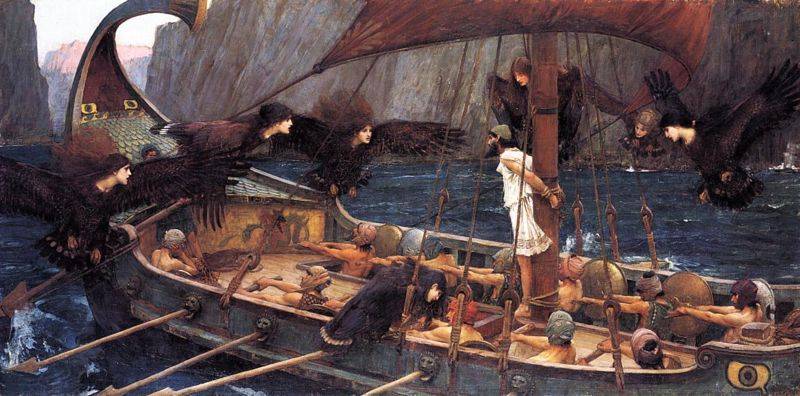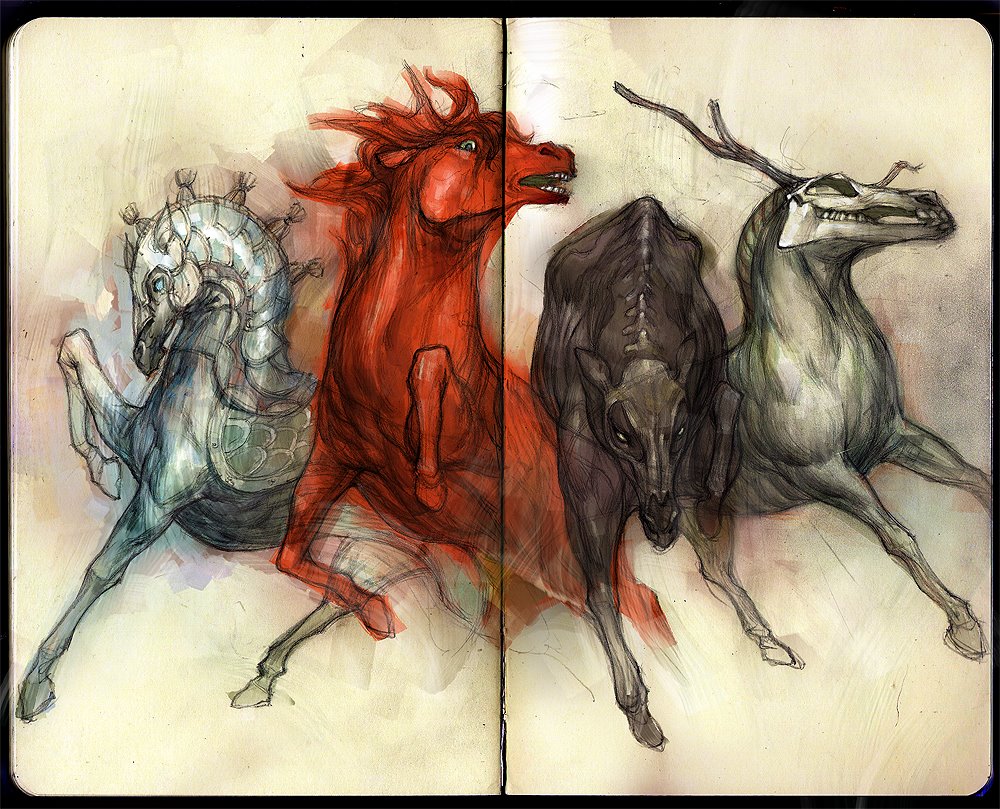Finding Our New Song (Revelation 7)

Ever More Precise
Let’s begin with a poem called Claritas by Denise Levertov:
The All-Day bird, the artist,
whitethroated sparrow,
striving
in hope and
good faith to make his notes
ever more precise, closer
to what he knows.
I love this line:
Striving in hope and good faith to make his notes ever more precise, closer to what he knows.
Isn’t this beautiful? I love this image of the bird struggling to find the right notes, “closer to what he knows.”
I think this image connects to something deep within all of us, it certainly does with me. One of the things I desire more than anything else is that the notes, the song that is within here — my head and my heart — can become the notes that I sing with my life.
I want the song of my heart to the be the song that is sung through my work, my play, my preaching, my care-giving, my fathering, and like this little bird, I want it to be a beautiful song.
But it isn’t always easy to line up head and heart, life and song. I remember when I was told that to become a minister was a worthless pursuit and something I would regret later in life by someone I looked up to and loved. Sometimes those we love, those we look up too, try to keep us from singing the songs of our hearts.
Often when we try to sing our song, like this All-Day Bird, there are others who tell us that we can’t sing, that our song is no good, that we are singing life in the wrong way.
Last week we focused on the central image of Revelation – the lamb that was slain – and about the religion of the lamb that was based in nonviolence. I described nonviolence as:
Nonviolence is a commitment to act in every situation in ways that honor the soul.
In other words, if this little bird is to learn his or her tune, if it is to make it more precise then it needs the conditions, the support, the community in order to exercise its little whistle.
The world that the young Jesus movement was born into was a world, the world that John’s revelation pierces into, is not one where the conditions were not perfect or safe, it was not a warm and welcoming environment for a little song bird’s new song. And so John’s message this morning is that if we want to sing our new song about the lamb, then we will need to recognize that it is going to go against the grain and that we are going to need help to do it because there are those who do not want it sung.
Sirens
As we saw last week, Revelation describes two kinds of religions in conflict, the religion of empire and the religion of the lamb that was slain. The religion of empire is rooted in fear, control, suspicion of others, and violence. The religion of the lamb is rooted in courage, patience, love of stranger, and nonviolence.
Each of these religions also have its own hymns. The Empire’s song is something like the Sirens in Homer’s Odyssey – The sirens were dangerous and beautiful creatures – a cross between bird and woman – and lured nearby sailors with their enchanting music and voices to shipwreck on the rocky coast of their island.”

Image from Tobee
This siren song sounds beautiful but if heeded the outcome will be disastrous. John’s vision is writing against a siren song that will stop at nothing until the whole world is left ship shipwrecked. John tells us what the empire’s siren song, its hymnal for worship, sounds like – four horses:
It is like a white horse, wearing a bow and crown, that “conquers to conquer” by thriving on international conflict and war.
It is like the red horse bearing a great sword that breeds civil war, and other internal conflict within its own people based on suspicion, estrangement and alienation.
It is like the black horse carrying a pair of scales that represents an economic system that not only strips the earth of its resources but is based on exploitation of the poor.
And it is like a pale green who is accompanied by death that will stop at nothing to become the song that lulls humanity into the lie that death and violence and fear are the final word for this life. That our imaginations, our hearts, our very lives should be limited by death.
The empire will stop at nothing usurp God’s song. If it has its own way, it will never permit this All-Day bird to sing its most faithful and honest tune (WHB Unveiling Empire, 141).
But there is are other singers who sing a counter-song, in fact seven times throughout revelation John doesn’t tell us that there is worship happening, John shows us what those singing the song of the lamb looks like. Revelation 5:9 calls it a new song, and you can see why it is new because it is a song that Pharaoh in egypt, and Domitian in Rome does not want sung.
The New Song of the Lamb
This new song of the lamb that was slain has an entirely different tune, and not only does it undo empire, it works to bring about a new creation under the guidance of the lamb.
This song is different and new because it is sung by imperfect voices, courageous voices, and voices that have been told not to sing.
It a song sung by many voices, heard in the marketplaces and in the corners of empire.
It can only be heard by those who pay close attention, by those who have ears, and those whose imaginations aren’t already marked by death.
Maybe those who sing this new song are a little like Odysseus’ crew who first have to put beeswax in their ears, so that they are not wooed by the siren song.
When John asks who can within stand the four horses of empire, it is this great multitude singing this new song that he sees.
This new song of the lamb is different because rather than scattering, sorting and creating suspicion, this is a song that gathers us together in “a great multitude of people that no one can count from every nation, from all tribes and peoples and languages standing before the lamb” (7:9).
This is a song that expands and includes. This is a song that invites you to lift up your voice and sing and to make that song becomes the song of your heart so that it is more precise, more rooted and grounded in this alternative way that the Lamb lays out before us.
John knows that those who sing this song will know that they are going against the grain and will need help. To sing this song his parishioners in his seven little churches could get killed.
This song has been sung in times since: when the department store workers, housewives, auto-mechanics, preachers, school teachers and others involved in the bloody sunday marched from Selma to Montgomery songs like “We Shall Not Be Moved” were heard ringing out.
To sing the song of the lamb is to march against the grain of this world. It is to make a break with those under the siren song of empire – and as history tells us, it is sometimes those in the church, as much as those on the outside who have succombed to that misguided tune.
It is possible that singing this song may get you disapproval from our fathers and mothers, from our bosses, our teachers, our pastors and other loved ones. But John at the end of Chapter 7 John reveals the lamb as a shepherd, guiding his people and tending to their needs.
Those who have made the break, who have learned to sing what is truly in their hearts, are the participants in a new community, singing a new song alongside the lamb of God who is our shepherd.
There will be tears in our song and “God will wipe those tears away” but this isn’t the about the warm-fuzzy wiping away of tears, these are the tears of real transformation by a people whose very lives, reputations, whose very song is on the line.
These are the tears of birthing a new creation into an old one, and the conflict and clash that ensures. This is a comforting message to those diverse group of people living out a different vision of the world. An alternative story that is not marked by a siren song of death, but by the life giving, soul-honoring, people gathering, courageous song of new creation.
Queries:
Are we willing to shed tears for the transformation that is required? Are we ready and willing to sing this song and to march against the grain if that is where the lamb takes us?
What would it take for us to learn this song as our own?
What would it look like for us to be like the All-Day bird whose precision rests on hope and good faith, development, and working the fine tuning necessary to make ones song of life truly reflect the beauty and truth that is buried within our souls?